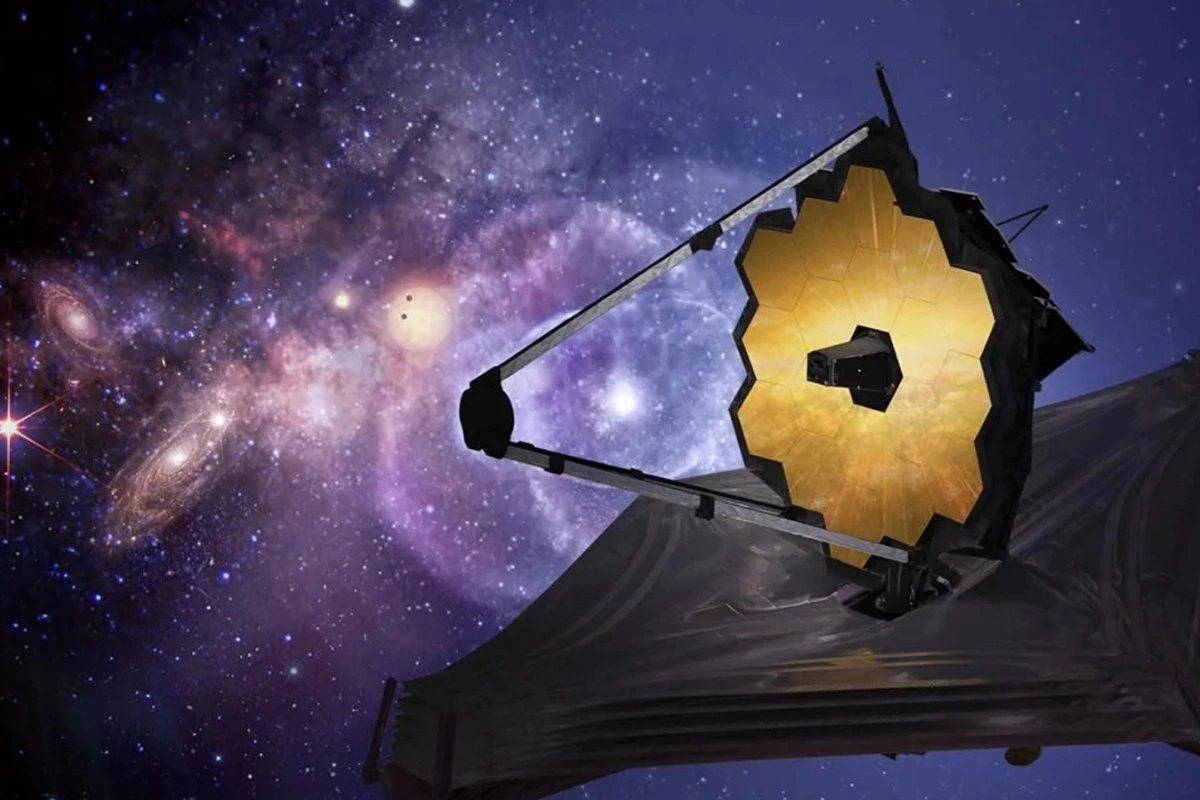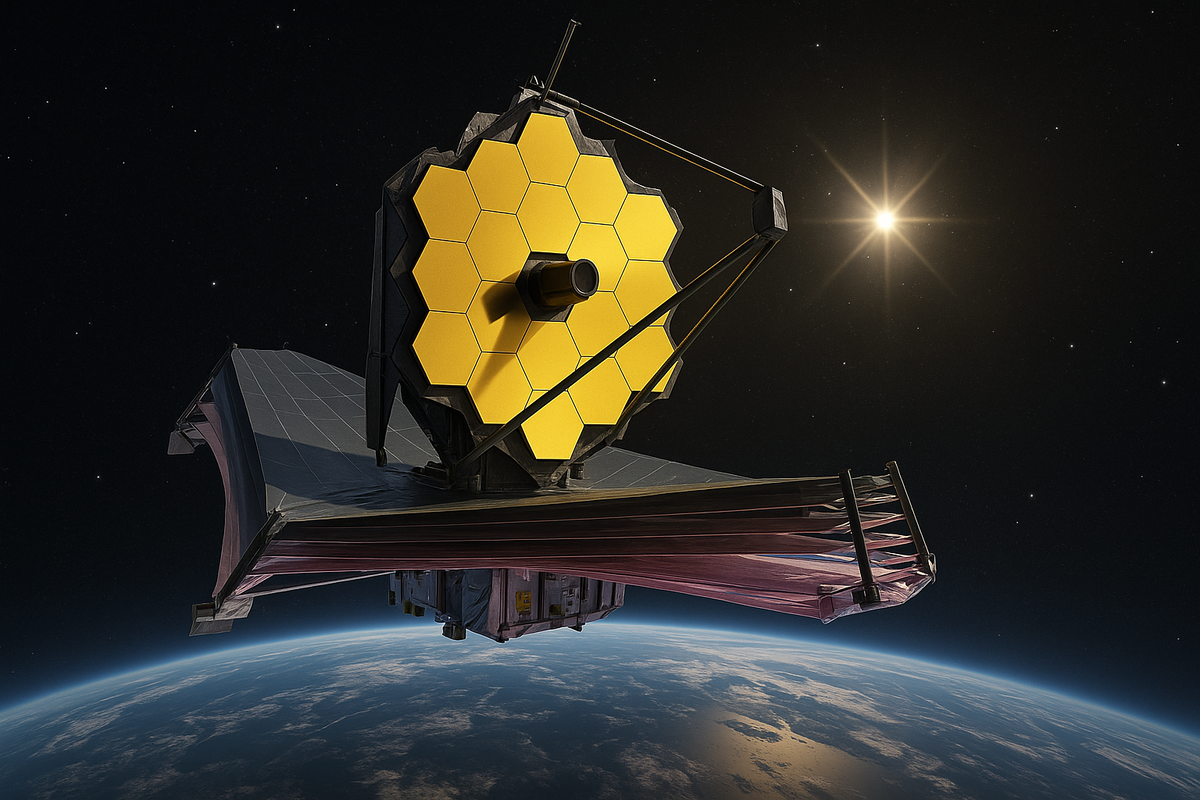The early universe still holds many mysteries, and the James Webb Space Telescope may have made a discovery that could revolutionise our understanding of the first stars.
Among the most distant objects ever observed, some have such strange characteristics that they could belong to a completely new category of stars, whose energy does not come from conventional nuclear reactions.
Using spectroscopic data collected by the James Webb Telescope’s NIRSpec instrument, a team of researchers has identified four potential candidates for these ‘black stars’. One of them, named JADES-GS-z14-0, shows a particularly intriguing helium absorption signature that could be indirect evidence of unusual behaviour. These observations come from the JADES survey, which probes the far reaches of the Universe with unparalleled precision, allowing the chemical composition of objects located at dizzying distances to be analysed.
The concept of dark stars was first proposed in 2007 to explain how certain cosmic structures could reach sizes and luminosities that contradict standard models. Unlike ordinary stars, which derive their energy from nuclear fusion, these hypothetical objects would be powered by the annihilation of dark matter, the invisible substance that makes up most of the mass of the Universe. This alternative energy source would allow them to reach colossal masses, up to a million times that of the Sun, while shining with phenomenal intensity.
However, the detection of oxygen around JADES-GS-z14-0 by the ALMA telescope network in Chile has raised doubts among scientists, as this element is normally produced by stars through nuclear fusion. The research team is now working to determine the maximum amount of oxygen compatible with the dark star scenario, seeking to establish a clear boundary between these exotic objects and conventional supermassive primordial stars.
The scientific community remains divided on the actual existence of these dark stars. Many specialists in Population III stars, the very first stars in the Universe, consider the conditions necessary for their formation to be too improbable. The main point of controversy concerns the difficulty of distinguishing these objects from traditional supermassive primordial stars, which could have similar spectral signatures despite fundamentally different physical mechanisms.
To settle this question once and for all, researchers plan to automate the search for characteristic spectral signatures in the vast volume of data collected by the James Webb Telescope. Only the accumulation of additional observations will determine whether we are truly witnessing the discovery of a new class of cosmic objects or simply a particular manifestation of already known primordial stars.
Dark matter, the driving force behind dark stars
Dark matter accounts for about 85% of the total matter in the Universe, but its exact nature remains one of the greatest mysteries of modern cosmology. Unlike ordinary matter, which interacts with light, this invisible substance neither emits nor absorbs electromagnetic radiation, making it extremely difficult to detect directly.
In the context of black stars, dark matter particles would annihilate each other, producing energy according to the principle E=mc². This process would release a considerable amount of energy, preventing the gas cloud from collapsing under its own gravity to the extent necessary to initiate nuclear fusion.
The main advantage of this mechanism is its exceptional longevity. While conventional stars exhaust their nuclear fuel in a few million to billion years, a dark star could theoretically shine indefinitely as long as it has a supply of dark matter, its core not being ‘contaminated’ by the generation of heavy elements.
This hypothesis opens up new perspectives for understanding the formation of the first cosmic structures and could explain certain puzzling observations, such as the existence of overly massive galaxies detected in a Universe that is too young for this.

Population III stars, cosmic ancestors
Population III stars are the first generation of stars formed after the Big Bang, composed exclusively of hydrogen, helium and traces of lithium. Studying them is crucial to understanding the chemical evolution of the Universe, as they produced the first heavy elements through nucleosynthesis.
These primordial stars are thought to have formed in an environment very different from the current Universe, from clouds of pure gas devoid of elements heavier than helium. This particular composition probably led to the formation of extremely massive stars, whose properties differ radically from those of contemporary stars.
The search for Population III stars is a considerable technical challenge, as their lifespan was relatively short and they died out more than 13 billion years ago. The James Webb Telescope, with its exceptional sensitivity in the infrared, offers the first opportunity to observe these objects directly.
The distinction between black stars and classical Population III stars is based on subtle spectral signatures and differences in their temporal evolution, requiring sophisticated theoretical models and very high-precision observations.




